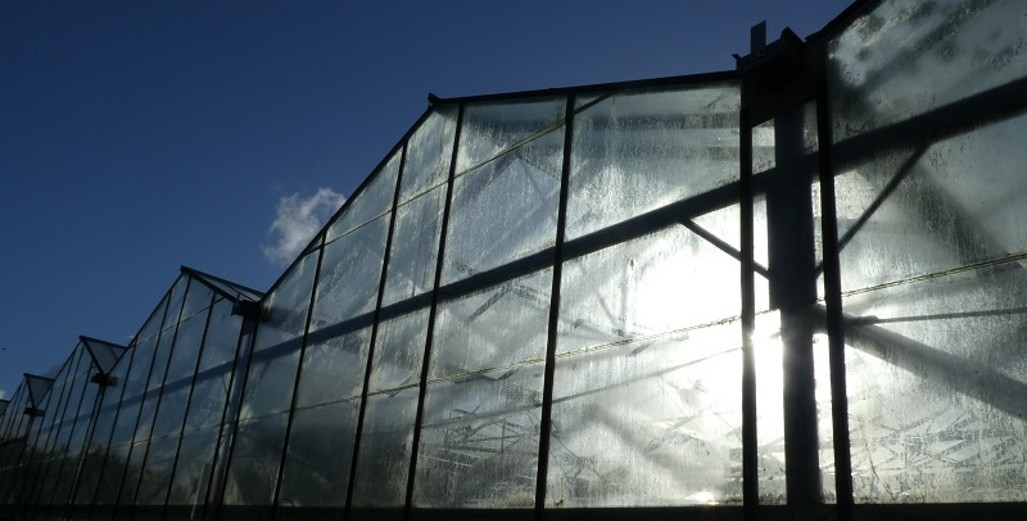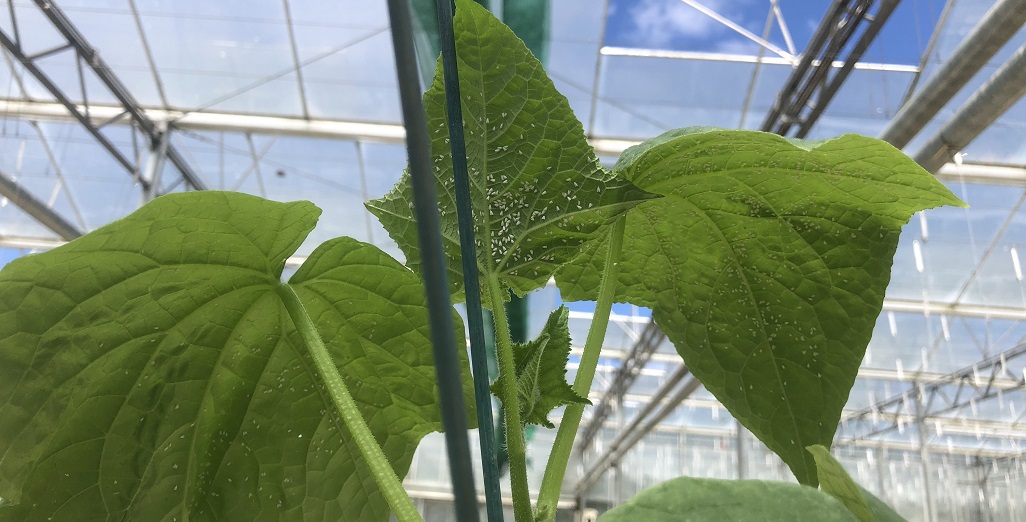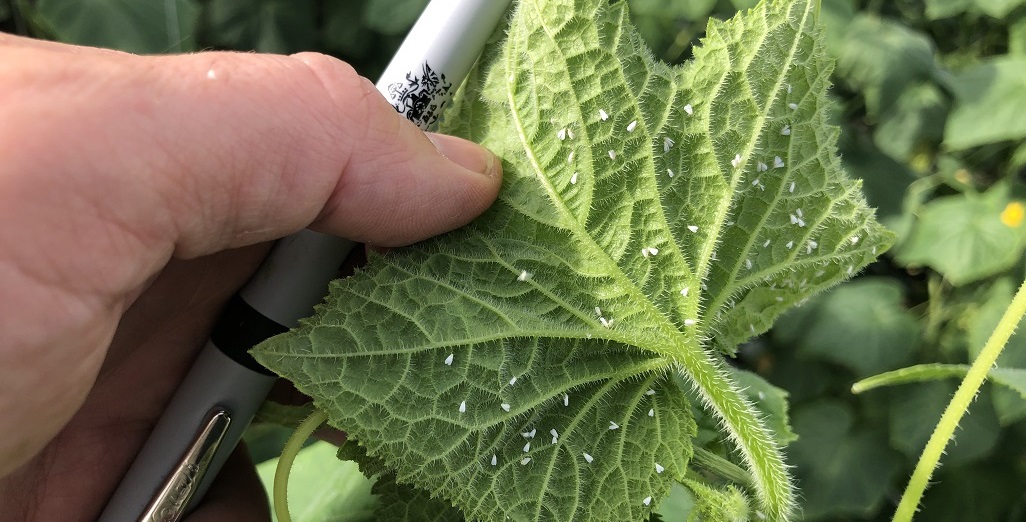Sign up here to subscribe to the Grower2grower Ezine. Every two weeks you will receive new articles, specific to the protected cropping industry, informing you of industry news and events straight to your inbox.
Dec 2021
Next-Generation Biocontrol of Glasshouse Pests

An Agroecological Approach
Steve Wratten and Shola Olaniyan
Bio-Protection Research Centre, Lincoln University, Lincoln. Ph: 03 423 0911
Email: steve.wratten@lincoln.ac.nz
A bit of background
Biological control (BC) of pests can be elegant, self-sustaining, non-polluting and cheap – when it works! In glasshouses, BC has had a long history, with researchers in the Netherlands leading the way. Before this approach was fully developed, broad-spectrum pesticides were the norm. This became unacceptable to EU and other markets and was a hazardous approach, as well as precluding any biological control approaches. Now, the EU leads the way with companies such as Koppert and Biobest, and Bioforce in New Zealand are part of that drive, with developing new agents and how to deploy them. We at the Bio-Protection Research Centre (BPRC), Lincoln University, have good links with Biobest, particularly Prof. Felix Wackers who is their Research Director. This BC approach reduces operational costs, enhances marketing and addresses a continually reducing portfolio of pesticide products on the market, as well as resistance in the pests themselves. The elegance of BC was nicely summarised in a BBC TV programme called Pest Wars. The narrator said “in its beauty and simplicity, a biocontrol system like this is unsurpassed. To farmers, it’s been a revelation”. Our challenge is to get back to that happy state.
In New Zealand glasshouses, the main biological control agents (BCAs) have been the introduced wasp Encarsia formosa against whitefly and another wasp, Aphidius colemani, against aphids. Predatory mites against the two-spotted spider mite were also commonly used. However, the range of BCAs commercially available in New Zealand is limited relative to the species available in Europe and North America. For example, generalist predators used overseas in greenhouse-grown tomatoes include mirid bug species capable of navigating the hairs found on tomato plants. These predators complement the parasitoid E. formosa, in suppressing whitefly populations, one of the key pests on tomatoes grown in glasshouses. In New Zealand there are no commercially available predators known to effectively predate whitefly on tomato plants. While E. formosa can be effective at managing these when their numbers are low, it is less effective when the pest’s population growth outstrips parasitism by this parasitoid.
Additionally, since the arrival of the dangerous disease-transmitting tomato-potato psyllid (TPP), no BCAs of proven efficacy have been available commercially to control this pest, resulting again in a reliance on pesticides to manage it. The latter wipes out and precludes the BC approach. However, recent results from the BPRC, with funding from AGMARDT, Tomatoes NZ and Vegetables NZ, show that the parasitic wasp, Tamarixia, has great promise in managing TPP. This was introduced by Plant and Food Research from Koppert’s Mexican laboratories after MPI approval.
Our experiments
We have evaluated a range of potential BCAs, including Tamarixia, against TPP in replicated experiments using BugDorm cages in a commercial-scale glasshouse at Lincoln University (see Fig. 1). Before that work, the BPRC funded preliminary work on a spectacular ladybird, Cleobora mellyi. This lives on eucalyptus trees in Tasmania and it was introduced to New Zealand to eat a beetle pest on eucalypts and brought to Lincoln with the help of colleagues in Blenheim. Our Centre is probably soon to be the only New Zealand location where cultures of the Tamarixia wasp are maintained.

Fig. 1. BugDorms in use in Experiment 1.
The BCAs evaluated in the first experiment were: the predatory mite Amblydromalus limonicus, the predatory bug Engytatus nicotianae, the ladybird Cleobora mellyi and the parasitic wasp Tamarixia triozae. Flowering buckwheat (BW) was added to the Tamarixia and Cleobora treatments to evaluate whether it enhanced the efficacy of these BCAs by providing nectar and pollen. Some of the results of that experiment are shown in Fig. 2. That work gave exciting results, indicating that although Engytatus was not much use, Cleobora with flowers and other treatments looked good but were not significant, while Cleobora and its bouquets knocked TPP numbers down to very low levels – as good as Tamarixia which was best of all.

Fig. 2. Mean number of TPP adults per tomato leaf in each treatment after three weeks. The effectiveness of Tamarixia was dramatic, reducing the numbers of adult psyllids to around 2% of the starting population. BW = buckwheat.
The second experiment was similar to the first but included two BCA species interacting in the same treatment as well as buckwheat being provided in some cases. This looked at possible synergies between different natural enemy species and whether buckwheat flowers enhanced overall effectiveness. A typical synergy might be that Tamarixia stings the early stages of the TPP pest, while Engytatus attacks the older ones and the ladybird eats, well, everything! Results are shown in Fig. 3.
Before the above work began, Plant and Food Research introduced Tamarixia to hedgerows comprising South African boxthorn in Canterbury. TPP can be abundant on that plant. The aim of this was to establish self-sustaining populations of the parasitoid and to help reduce populations of TPP in habitats that provide refuges

Fig. 3. Mean number of TPP adults per leaf in each treatment after six weeks. The effectiveness of Tamarixia was dramatic, reducing the numbers of adult psyllids to around 2% of the starting population. BW = buckwheat. Cleobora, Tamarixia and Limonicus were exceptionally effective, reducing TPP adult numbers from 30–40/leaf to three or lower.
for the pest in the absence of annual host plants such as potato and tomato crops. Also, large numbers of Tamarixia in the field margins could invade potato crops, reducing the need for pesticide spraying. Currently, this can occur at 15 times per season in potatoes. Any reduction of TPP in the field by Tamarixia could reduce the chances that the pest will colonise glasshouses – a win-win situation.
Early work of this type, conducted in vineyards with other pests and BCAs, showed that buckwheat and phacelia flowers improved BC of vine pests by providing appropriate nectar to parasitic wasps (Fig. 4)
Fig. 4. Vine rows in Waipara, North Canterbury, planted with buckwheat (Top) and phacelia (Below). Photo: Jean-Luc Dufour.
Future plans
Our plans include:
- Further evaluating complementary effects of BCAs, i.e. release two or more species at once. These species would have different behaviours and dietary preferences as well as perhaps having the ability to deal with low pest populations.
- Providing ‘rewards’ to the BCAs in the form of SNAP (Shelter, Nectar, Alternative food, Pollen) – buckwheat is the top candidate in this respect based on related work at Lincoln University. The ‘Alternative food’ approach would be best provided by the use of banker plants on which insects which do not attack tomato harbour persistent background populations of the BCAs. For this and other approaches suggested here, this would work only if pesticide spraying was reduced in at least part of the glasshouse.
- Evaluating potential new glasshouse BCAs which exist in New Zealand but have not been evaluated in glasshouses. A potentially good candidate is the green lacewing. This can be abundant around Auckland, is veracious and can be easily cultured. Prof. Steve Wratten has worked with this insect in the UK (www.mambo-tox.co.uk) and he and PhD student Morgan Shields will visit the Auckland glasshouse company called Curious Croppers in September to try to collect and maintain cultures of this lacewing and its cousin, the brown lacewing.
- Working at appropriate spatial scales, i.e. in parts of commercial glasshouses or at a commercial scale in glasshouses at Lincoln University.
Involvement with industry
With help from Bioforce in Auckland, Underglass Bombay Ltd hope to advise on the first of our larger-scale experiments. Our knowledge of the NZ tomato industry is extensive, so we are well positioned to expand our large-scale work as results develop. Also, Albert and Humphrey Shih have earlier expressed their willingness to offer help in glasshouses near Lincoln. To enable us to address Māori aspirations, we have a working relationship with Te Rūnanga o Koukourārata (Port Levy, Banks Peninsula). This involves growing food crops around the marae. That Rūnanga has been gifted three plastic tunnel houses by Tunnelhouse World, Christchurch, with the help of the Future Farming Centre at Lincoln University (www.bhu.org.nz/future-farming-centre).
A lovely illustration of how parasitic wasps go about their business can be seen in the video clip here (https://youtu.be/57RgIp_2EN8). Videography by Eric Weiss, Germany.
This collaborative work is world-leading and the New Zealand horticultural industry was given a taster of these early results and prospects at the Horticulture NZ ‘Our Food Story’ conference in Christchurch in August 2018. Three hundred people were exposed to these non-insecticidal approaches, which are vital in the face of the increasing volatility agricultural and horticultural sectors.
CLASSIFIED
Subscribe to our E-Zine
More
From This Category

Starting on the back foot

(Best of 2023) RNA-based disease control in protected cropping environments. Anne Sawyer presents at the PCA Conference (Best new development PCA 2023)

(Best of 2023) Aphid infestation on cucumber crops

LimoMax, a new predator for insect control in greenhouses and outdoor crops.

Aphid infestation on cucumber crops

























